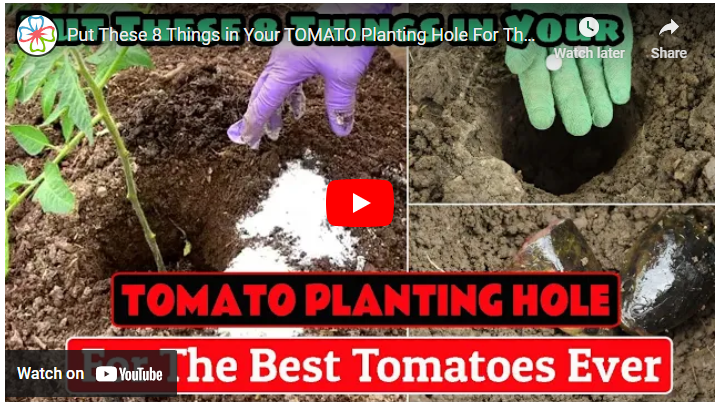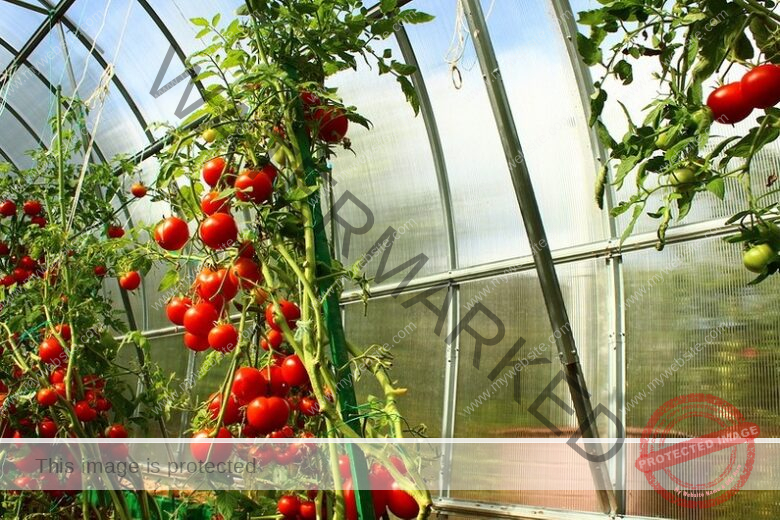Tomatoes are one of the most popular and versatile vegetables (or technically fruits) grown in home gardens. Whether you’re a seasoned gardener or just starting out, having the best soil for tomatoes is crucial to ensure healthy plants and a bountiful harvest.
In this article, we will guide you through the process of creating optimal soil conditions for growing tomatoes successfully. So, let’s get our hands dirty and dive into the world of soil preparation for these luscious red fruits!
Tomatoes thrive in well-drained, fertile soil that is rich in organic matter. By understanding the specific requirements of tomatoes and implementing the right soil preparation techniques, you can create an ideal environment for your tomato plants to flourish.
How to Make the Best Soil for Tomatoes
Understanding Tomato Soil Requirements
To grow healthy tomatoes, it’s essential to understand their soil requirements. Tomatoes prefer soil that is loamy, well-drained, and has a slightly acidic to neutral pH level. They require a good balance of nutrients, including nitrogen, phosphorus, and potassium, as well as other essential micronutrients.
Testing and Analyzing Your Soil
Before preparing the soil, it’s crucial to test and analyze its composition. You can use a soil testing kit or send a sample to a local agricultural extension office. This will help you determine the pH level, nutrient content, and any deficiencies in your soil, enabling you to make informed decisions about soil amendments.
Preparing the Soil
Start by clearing the planting area of any weeds, rocks, or debris. Loosen the soil using a garden fork or tiller to improve aeration and drainage. Remove any large clumps or stones that could hinder root development. Level the soil surface to create a uniform planting area.
Choosing the Right Soil Amendments
Based on the results of your soil test, you may need to add amendments to optimize the soil composition. Organic matter such as compost, well-rotted manure, or leaf mold can improve soil structure and increase nutrient availability. Incorporate the amendments evenly into the topsoil.
Composting for Nutrient-rich Soil
Creating your compost is an excellent way to enrich the soil naturally. Compost adds essential nutrients, improves soil structure, and enhances moisture retention. Start a compost pile or use a compost bin to recycle kitchen scraps, yard waste, and other organic materials. Apply compost to the soil before planting or as a top dressing during the growing season.
Enhancing Soil Drainage
Tomatoes dislike soggy or waterlogged soil, as it can lead to root rot and other diseases. To improve drainage, consider adding organic matter and coarse materials like sand or perlite to the soil. Raised beds or planting tomatoes on slopes can also help with drainage.
Mulching for Moisture Retention
Mulching is an effective technique to conserve soil moisture, suppress weeds, and maintain a more consistent soil temperature. Apply a layer of organic mulch, such as straw, wood chips, or grass clippings, around the tomato plants. This will also help prevent soil splashing onto the leaves, reducing the risk of disease.
The Role of pH in Tomato Soil
Tomatoes thrive in soil with a slightly acidic to neutral pH range of 6.0 to 7.0. If your soil is too acidic or alkaline, adjust the pH accordingly. You can use organic amendments like lime to raise pH or sulfur to lower pH. Regularly monitor the pH level to ensure it remains within the optimal range.
Controlling Weeds and Pests
Weeds compete with tomatoes for nutrients and water, so it’s crucial to control them. Mulching can help suppress weeds, but manual weeding or using organic weed control methods may also be necessary. Additionally, keep an eye out for common tomato pests such as aphids, whiteflies, and hornworms. Consider natural pest control methods or use organic pesticides if necessary.
Watering Techniques for Tomato Plants
Tomatoes require consistent and adequate moisture throughout their growth stages. Water deeply and evenly, aiming to provide around 1-1.5 inches of water per week. Avoid overhead watering, as wet foliage can promote the spread of diseases. Instead, use drip irrigation or water at the base of the plants.
Providing Adequate Sunlight
Tomatoes are sun-loving plants and require at least 6-8 hours of direct sunlight daily. Choose a sunny spot in your garden to ensure your tomato plants receive ample sunlight. Insufficient light can result in leggy plants, reduced fruit production, and increased susceptibility to diseases.
Support Systems for Tomato Plants
Most tomato varieties benefit from support systems to keep the plants upright and promote better airflow. Use stakes, cages, or trellises to support the plants as they grow. This will prevent them from sprawling on the ground, reduce the risk of disease, and make harvesting easier.
Pruning and Training Tomatoes
Pruning and training tomato plants help improve airflow, reduce the risk of diseases, and channel energy into fruit production. Remove the lower branches and suckers that grow in the leaf axils. Use twine or clips to train the main stem to the support structure. Regularly pinch off the top to control excessive growth.
How often should I water my tomato plants?
Water deeply and evenly, providing around 1-1.5 inches of water per week.
What is the best mulch for tomato plants?
Organic mulches like straw, wood chips, or grass clippings work well for tomatoes.
Should I remove the lower branches of tomato plants?
Yes, removing the lower branches improves airflow and reduces the risk of disease.
Can I grow tomatoes in containers?
Yes, tomatoes can be grown successfully in containers, provided they have sufficient soil depth and drainage.
How do I prevent tomato pests without using chemicals?
Natural pest control methods include companion planting, using insect-repelling plants, and handpicking pests.
Remember, creating the best soil for tomatoes is a vital step towards growing healthy and flavorful fruits. By investing time and effort into soil preparation, nutrient optimization, and plant care, you’ll be rewarded with a bountiful tomato harvest that will enhance your culinary experiences. So, grab your gardening tools and get ready to enjoy the fruits of your labor!
Conclusion
By following the guidelines and tips outlined in this article, you can create the best soil for tomatoes and set the stage for a successful harvest. Remember to prioritize soil quality, nutrient balance, drainage, and other crucial factors that contribute to the overall health and productivity of your tomato plants.




